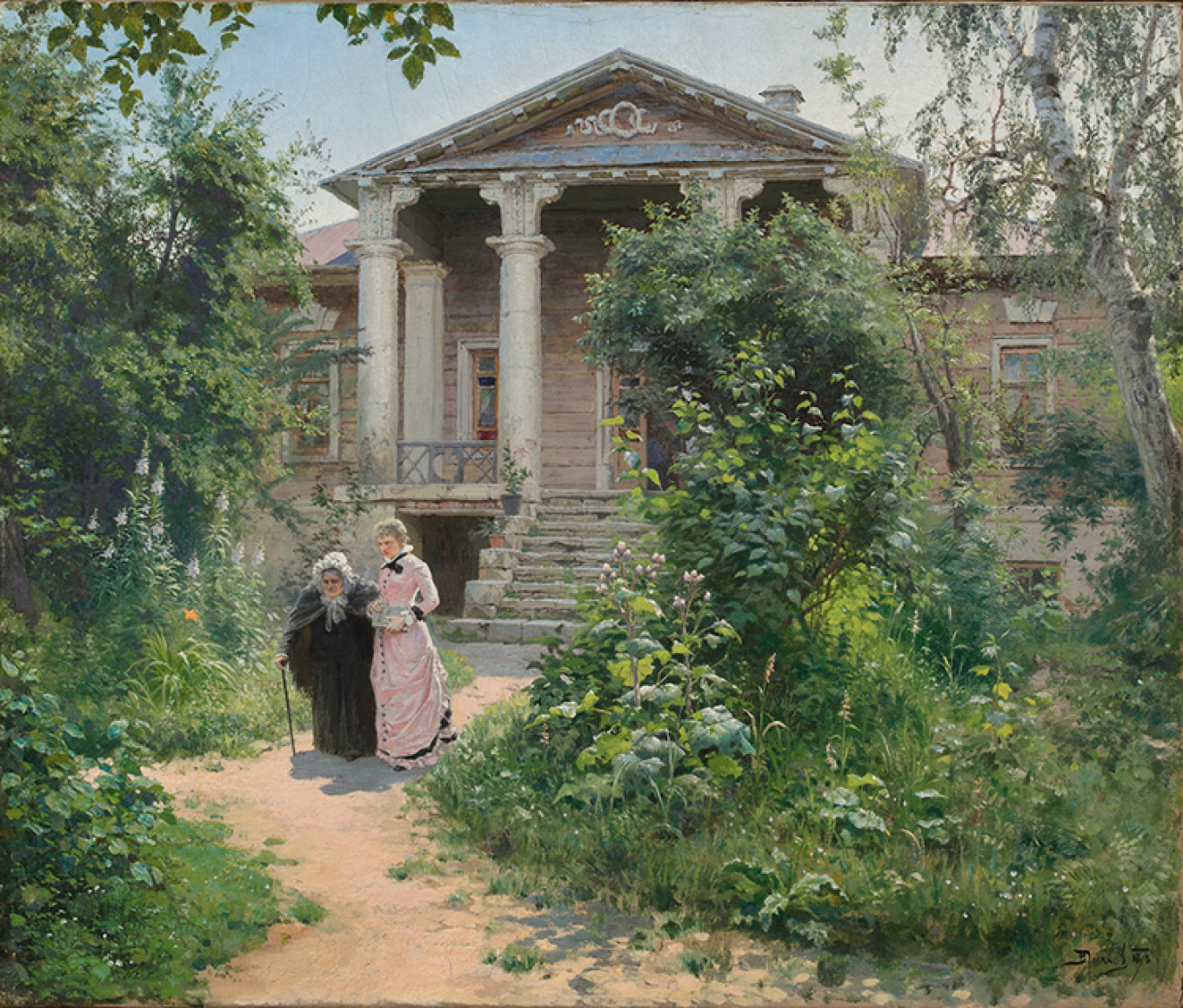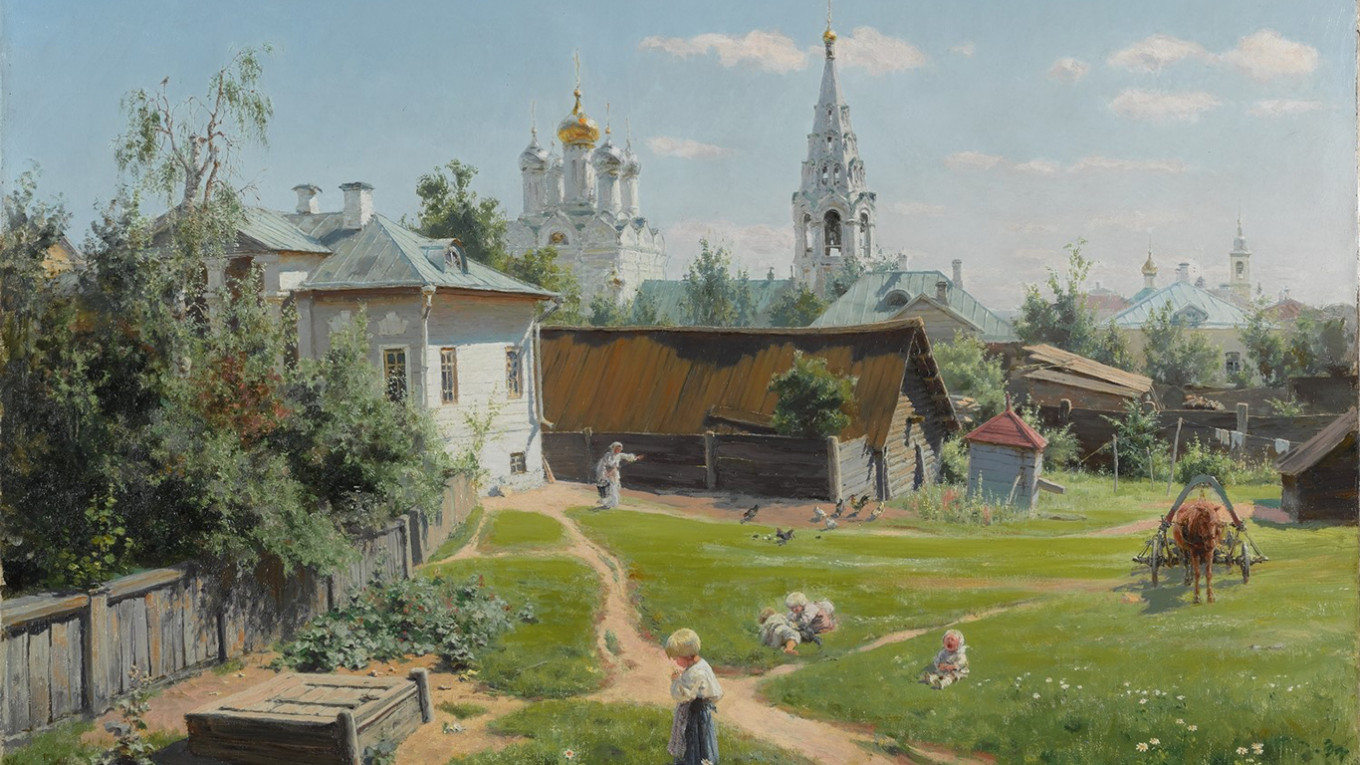The largest retrospective works by Vasily Polenov, a prominent Russian painter of the second half of the 19th – early 20th century, opened at the New Tretyakov Gallery. The retrospective is dedicated to the 175th anniversary of the painter’s birth.
Polenov, a member of the “Wanderers” (Peredvizhniki) group of realist painters, is primarily known for his landscapes. The exhibition spans Polenov’s entire life and features over 150 works from sixteen Russian museums and private collections.
Zelfira Tregulova, general director of the Tretyakov Gallery, said at the opening press conference that “it was a challenge to open Polenov retrospective on the heels of the extremely successful Ilya Repin exhibition, which was visited by more than 600,000 people. On the other hand, it’s interesting that Polenov was born in the same year as Repin, was friends with him, graduated from the St. Petersburg Academy of Fine Arts with him and travelled in Italy and France together.”
Tregulova added that the Tretyakov Gallery wanted to “show that Polenov made a real breakthrough in plein air (outdoor) painting, and was the first artist who treated color and light in his paintings as something of the highest importance.”
Polenov himself used to say that “art must bring happiness and joy to people, or else it has no point.” The painter’s celebrated landscapes take the center at this retrospective. There are many paintings done at his estate on Oka river, at his family estate in the North of Russia and in Moscow. You can see two versions of one of his main masterpieces “Moscow Courtyard” and try to spot the differences.

Apart from landscapes, Polenov is best known for his religious art, a series of historical paintings depicting the life of Jesus Christ. Polenov made two working trips to the Middle East, exploring Jerusalem, the Jordan Valley, Dead Sea, and many other spots connected with the life of Jesus.
Part of this series is the famous large painting “Christ and the Sinner Woman” from the State Russian Museum in St Petersburg. Polenov sold it to Emperor Alexander III, which allowed him to buy his estate on the Oka river, which now houses the Polenovo Estate Museum. The painting is being exhibited in Moscow for the first time in 130 years.
A whole section of the exhibition is devoted to the paintings of Polenov’s students, including such stellar artists as Konstantin Korovin, Isaac Levitan, Nikolay Sapunov and Aleksandr Golovin. A unique diorama with “magic” pictures that Polenov created forchildren was meticulously reconstructed at the Tretyakov Gallery with the help of the Polenovo Estate Museum.

Natalya Polenova, Director of the Polenovo Estate Museum, which has been continuously run by the painter’s descendants, in a statement to The Moscow Times said that “the most important thing for any artist is that his legacy survives, that his paintings are admired and appreciated. Polenov was lucky in that respect since one of his major works was the estate itself: he designed all of the houses and much of what’s inside. The estate is a continuation of Polenov’s paintings, and we try to keep it just the way it was during his time.”
The exhibition runs until Feb. 16.
New Tretyakov Gallery. 10 Krymsky Val. For more information, see the museum site.
For more information on the Polenovo Estate Museum, see the museum site.
A Message from The Moscow Times:
Dear readers,
We are facing unprecedented challenges. Russia's Prosecutor General's Office has designated The Moscow Times as an "undesirable" organization, criminalizing our work and putting our staff at risk of prosecution. This follows our earlier unjust labeling as a "foreign agent."
These actions are direct attempts to silence independent journalism in Russia. The authorities claim our work "discredits the decisions of the Russian leadership." We see things differently: we strive to provide accurate, unbiased reporting on Russia.
We, the journalists of The Moscow Times, refuse to be silenced. But to continue our work, we need your help.
Your support, no matter how small, makes a world of difference. If you can, please support us monthly starting from just $2. It's quick to set up, and every contribution makes a significant impact.
By supporting The Moscow Times, you're defending open, independent journalism in the face of repression. Thank you for standing with us.
Remind me later.






